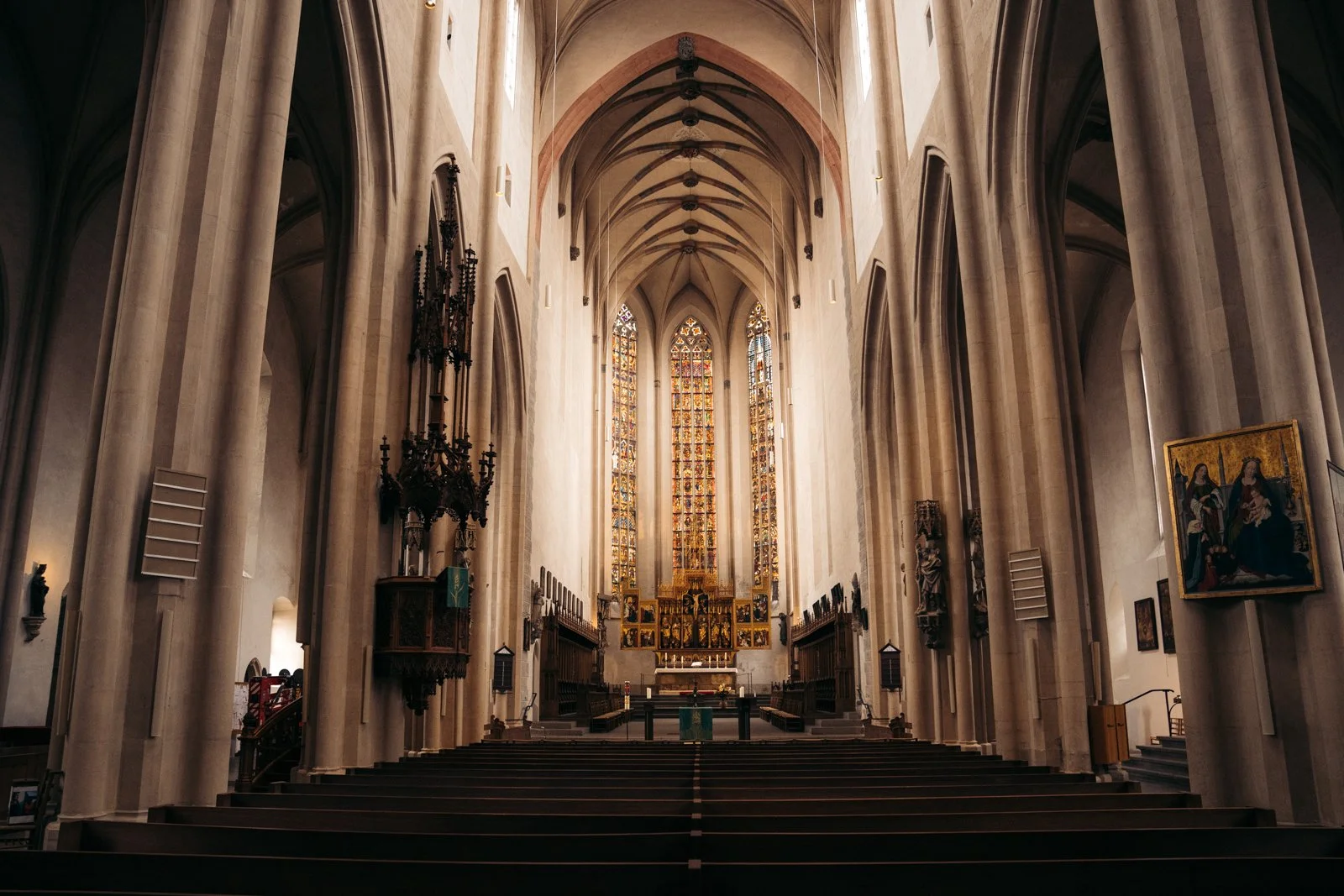Rothenburg ob der Tauber: A medieval town worth more than one visit
It's tempting to write off Rothenburg ob der Tauber as just another tourist hotspot in Germany, but, after visiting four times (well, technically five, if you count the trip I made in my mom's belly when my parents lived in Nuremberg in the 80s), I can vouch for its genuine charm. Yes, it gets crowded. But living just ninety minutes away means I can time my visits to avoid the peak tourist rush and experience the town at its most peaceful.
Visiting for a short time and can't avoid them? Not to worry, it's still worth a visit. The earlier you arrive, the more secluded it is since most groups arrive around lunchtime with the tour buses. Early riser and staying in the city? Walk the wall around the city at sunrise; the whole loop will take around two and a half hours.
Rothenburg ob der Tauber in mid September
History
Located along the Romantic Road, Rothenburg is Germany's best preserved walled medieval city, and one of the most visited towns in Europe. Rothenburg started as a parish (located just below the current city), founded by Franconian Reinger in 970. In 1142, King Conrad III purchased the land and built the Imperial Castle. Along with the castle, a fortification ring, a market square, a town church, and two monasteries, Rothenburg became an almost entirely autonomous city recognizing only the empire as the governing authority.
In 1525, the city was weakened by social unrest and the Peasants' War. By 1544, the city broke its previous church ties, and the two monasteries were dissolved. This unrest started its decline in political significance. Though it was still clinging to its economic importance, the Thirty Years' War brought this to an end. Raids, looting, epidemics, and the continued target of military conquests obliterated the population.
In 1803, the city was consolidated into the Kingdom of Bavaria, and in 1873, it was connected to the German railway system. By this time, artists, scientists, and writers who had "rediscovered" the city started marketing Rothenburg to the public, drawing in tourists to experience what they considered "the epitome of old German urban planning".
Sadly, the city's history took a dark turn in the late 1930s, when the Jews were expelled and the city became a model city under the Third Reich. With an air raid by Americans in the last weeks of World War II, around 45% of the old walled city was destroyed. The post-war reconstruction is what you see today when you visit, and it is one of Rothenburg's most significant achievements in modern history.
St Jacobs Church
Things to do in Rothenburg ob der Tauber
Walk the wall. It's about 4 kilometers (2.5 miles for my US friends).
Visit Saint Jacob's Church (Also goes by Saint James' or St Jakobskirche
Browse the vintage & thrift stores
Visit the Medieval Crime Museum
Stroll around Plönlein (though I would recommend doing this closer to sunrise or just after to avoid the crowds). The street of colorful homes to the left, just before this gate, is one of my favorites.
Picnic in the Castle Garden. The views overlooking the valley and churches below are stunning.
Like scavenger hunts? See if you can locate all of the 40+ towers throughout the city.
Enjoy the many hiking and biking trails outside of the city
Visit the famous Käthe Wolfhart Rothenburg store "Weihnachtsdorf" (seriously, it's impressive inside and showcases over 1000 square meters of Christmas delight)
During late November and December, visit the Christmas market (November 21- December 23, 2025)
Plönlein- iconic photo location in Rothenburg
What to Eat in Rothenburg ob der Tauber
In every bakery in Rothenburg, you will find Schneeball, a deep-fried pastry shaped like a ball and extremely popular in this area. To me, it tastes like a flavored pretzel ball. We got ours from Bakery Cafe Friedrich Schöbel.
Grab a wurst to go at Metzgerei Trumpp Inh Butcher Shop.
For lovers of Italian, dine at Cafe Michelangelo.
Parking
There are several lots right outside of the city, you can all that information here. There is a free dirt lot located on the left before you get to P4 if you arrive early enough and can grab spot. I don’t have the exact coordinates, but it’s about a five-minute walk from there into the city (close the cemetery), and there is a large recycling dumpster in the lot, I know, very helpful.
Final Thoughts
All of my visits to Rothenburg have been day trips so far, though I plan to spend a night there one day. Each time I return, I see something new, a quiet side alley, a hidden courtyard, a shop I'd missed before. In winter, the Christmas market brings trees and lights to nearly every storefront. Summer fills the streets with flowers, and fall offers fewer crowds and cooler air that makes exploring more enjoyable. Whatever the season, Rothenburg's medieval streets have a way of drawing you in, and this city is definitely worth more than just one visit.
Find this post helpful?
Pin it for later!
Enjoy strolling through medieval towns? You might also like this post:
Some of the links above are affiliate links; should you make a purchase, I may receive a small commission. From the bottom of my heart, thank you for supporting my blog.















